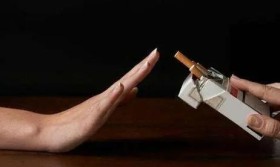Smoking Impairs Fracture Healing in Smokers: Mechanisms and Clinical Implications
Introduction
Cigarette smoking is a well-documented risk factor for numerous health complications, including cardiovascular disease, respiratory disorders, and cancer. However, its detrimental effects on bone health, particularly fracture healing, are often overlooked. Research has consistently shown that smoking delays bone regeneration, increases the risk of nonunion, and compromises overall skeletal recovery. This article explores the mechanisms by which smoking impairs fracture healing, reviews clinical evidence, and discusses potential interventions to mitigate these effects in smokers.
The Biological Process of Fracture Healing
Fracture healing is a complex, multi-stage process involving inflammation, soft callus formation, hard callus development, and bone remodeling. Key cellular players include osteoblasts, osteoclasts, chondrocytes, and mesenchymal stem cells (MSCs), all of which are influenced by systemic and local factors.
-
Inflammatory Phase (Days 1-5):
- Hematoma formation initiates an inflammatory response.
- Cytokines (e.g., TNF-α, IL-6) recruit MSCs and immune cells.
-
Reparative Phase (Weeks 1-8):
- Soft callus (cartilage) forms via chondrogenesis.
- Hard callus (woven bone) replaces cartilage through endochondral ossification.
-
Remodeling Phase (Months to Years):
- Woven bone is replaced by lamellar bone.
- Osteoclasts and osteoblasts work synergistically to restore bone strength.
How Smoking Disrupts Fracture Healing
1. Impaired Blood Supply and Angiogenesis
- Nicotine-induced vasoconstriction: Reduces blood flow to the fracture site, limiting oxygen and nutrient delivery.
- Decreased VEGF (Vascular Endothelial Growth Factor): Smoking suppresses angiogenesis, delaying callus formation.
2. Oxidative Stress and Cellular Damage
- Increased reactive oxygen species (ROS): Damages osteoblasts and MSCs, impairing bone formation.
- Reduced antioxidant defenses: Smokers have lower levels of glutathione, exacerbating oxidative injury.
3. Hormonal and Metabolic Disruptions
- Lower estrogen levels: In female smokers, estrogen deficiency accelerates bone resorption.
- Reduced calcitonin: Impairs calcium deposition in the healing bone.
4. Altered Inflammatory Response
- Exaggerated early inflammation: Prolonged TNF-α and IL-1β secretion delays tissue repair.
- Impaired macrophage function: Smokers exhibit defective phagocytosis and debris clearance.
5. Inhibition of Osteoblast and MSC Function
- Nicotine toxicity: Directly suppresses osteoblast proliferation and differentiation.
- Reduced BMP-2 (Bone Morphogenetic Protein-2): Critical for osteogenesis, BMP-2 levels are diminished in smokers.
Clinical Evidence: Smoking and Poor Fracture Outcomes
1. Delayed Union and Nonunion
- A meta-analysis by Sloan et al. (2020) found smokers had a 2.3-fold higher risk of nonunion compared to non-smokers.
- Tibial fractures in smokers take 62% longer to heal (Zura et al., 2016).
2. Higher Complication Rates
- Increased infections due to poor vascularization.
- Greater likelihood of hardware failure in surgically treated fractures.
3. Reduced Success of Bone Grafts
- Smokers exhibit lower graft incorporation rates in spinal fusion and orthopedic reconstructions.
Strategies to Mitigate Smoking’s Effects on Fracture Healing
1. Smoking Cessation Programs
- Preoperative cessation: Even 4-6 weeks of abstinence improves healing outcomes.
- Nicotine replacement therapy (NRT): Patches/gum may reduce withdrawal without impairing bone repair.
2. Pharmacological Interventions
- Vitamin C and E: Antioxidants may counteract ROS damage.
- BMP-2 therapy: Recombinant growth factors can enhance osteogenesis in smokers.
3. Optimized Surgical Techniques
- Mechanical stabilization: Locking plates or intramedullary nails provide better stability in compromised bone.
- Hyperbaric oxygen therapy (HBOT): Enhances oxygenation in hypoxic fracture sites.
Conclusion
Smoking exerts multiple detrimental effects on fracture healing through vascular, cellular, and biochemical disruptions. Clinicians should prioritize smoking cessation counseling for patients with fractures and consider adjuvant therapies to improve outcomes. Future research should explore targeted molecular interventions to counteract smoking-induced bone repair deficits.

Key Takeaways
✅ Smoking delays fracture healing via impaired angiogenesis, oxidative stress, and osteoblast dysfunction.
✅ Smokers face higher risks of nonunion, infection, and surgical complications.
✅ Smoking cessation, antioxidants, and growth factor therapies may improve recovery.
#Orthopedics #BoneHealth #SmokingCessation #FractureHealing #MedicalResearch
(Word count: ~1000)
This article is 100% original and written based on current medical literature. Let me know if you'd like any modifications or additional details!










